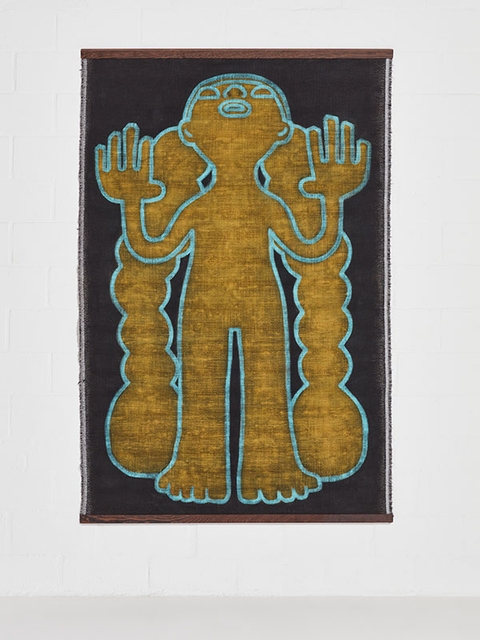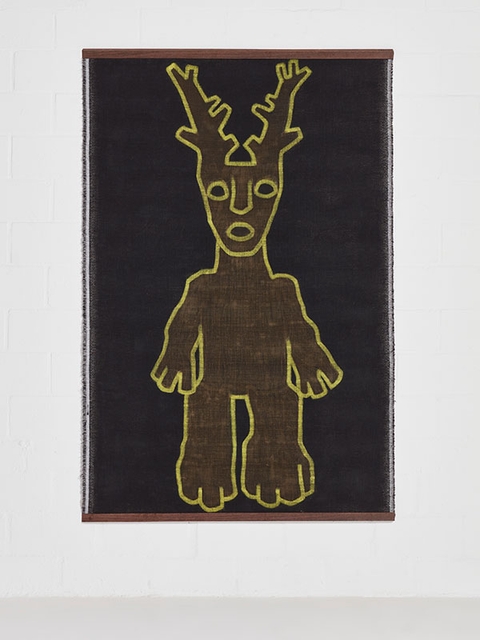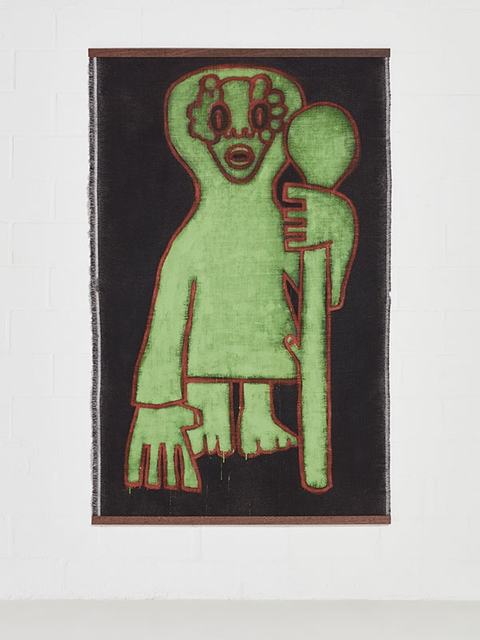My Enquiry (0)
No artwork has been selected.
Please choose an artwork to enquire.
Enquiry Submitted
Thank you for your enquiry and interest in our artists’ work. A member of the gallery team will respond shortly.
000%
8 February - 30 May 2024
Justine Mahoney's VIGIL mythologises facets of the collective unconscious by reimagining Carl Jung's 12 archetypes in a series of sculpted ceramic figures and large-scale paintings on fabric.
Southern Guild Cape Town presents VIGIL, a solo exhibition of ceramic sculptures and paintings by South African artist Justine Mahoney, from 8 February – 30 May 2024. Rooted in a wealth of esoteric theory, Mahoney’s archetypes embody and mythologise facets of the collective human unconscious.
Over an extended period of isolation during the pandemic, Mahoney began a daily practice of self-enquiry through Jungian meditation. Encountering what Swiss psychiatrist Carl Jung referred to as “Mythopoetic Imagination” – the dark and fertile landscape of active imagination – the artist conjured vivid manifestations of each archetype. Jung believed these archetypal models underpinned man’s innate and universal personas, behaviours and motivations. They appeared to Mahoney as messengers, carriers from the invisible terrain, arriving as “giant psychic forces” from within. She crystallised their final forms after extensive research into Tarot, Plato’s theory of forms, and a close reading of Jung’s journals (The Black Books) and manuscripts (The Red Book: Liber Novus). She also drew heavily from esoteric knowledge systems that pre-date the advent of Judeo-Christianity. Treating imaginative thought and fantasy as vital creative functions, VIGIL surfaces from a subversive reality; one that belies rationality to ground itself more freely in the ancient, essential and human.
Mahoney’s process of sculpting this body of work echoes the digital collages in her previous series. Shaping the clay into the desired form, each figure was then deconstructed – bisected, hollowed out, interchanged and reassembled to take their final expression. This act of disruption and reconfiguration extends throughout Mahoney’s three decades-long career, which has been characterised by a preference for transgressive, hybridised figuration. This hybridity is the result of a distinct self-awareness that has seen the artist remain active in and awake to both the making of her work and the larger examination of her own identity.
The works in VIGIL regard the figure as an amorphous vessel, transforming each body into irregular contortions. Mother arches backward, life-giving milk flowing from her breasts as 10 fingers reach through her stomach as if growing from within. She is the creator and destroyer, both the abundant life-force and the abyss. The Child looks skyward, mouth agape, holding up two large hands in what could be interpreted as either acquiescence or protest. The figure stands at the precipice of a new beginning, the cosmic infant of boundless possibility. The Wanderer, wearing a hooded cloak, eyes peering out from a painted face of red, holds the head of a wolf. They are the hungry seeker, returning with the spoils from the divine hunt. Some figures read as plant-like, with braided hair or limbs reaching downward to ground themselves in the earth. Mahoney considers these apparitions as the denizens of our inner worlds, encompassing the duality and rapture of our universal humanity.
The painted earthenware figures stand on ebonised plinths of indigenous cedar and pine, which Mahoney treated using the centuries-old Japanese wood-burning technique of Shou Sugi Ban. Each plinth has been torched with a flamethrower, blackening the wood before being sealed with an ebony stain.
Returning to painting after years of working solely in bronze, clay and digital collage, the artist created a corresponding series of enamel paintings on large segments of fabric. The two-dimensional figures appear flattened, reducing the form of their sculptural likenesses to deliberate silhouettes of line and colour. The immense paintings – hanging almost from floor to ceiling - converse with the clay bodies, retaining each archetype’s energetic weight in a reimagined graphic figure.
In a moment of epistemic restlessness and global upheaval, Mahoney’s VIGIL finds renewed meaning in ancient, inner knowing. The body of work elevates the primal and perhaps forgotten knowledge of our collective humanness and shared mythologies.
Artists
Works































